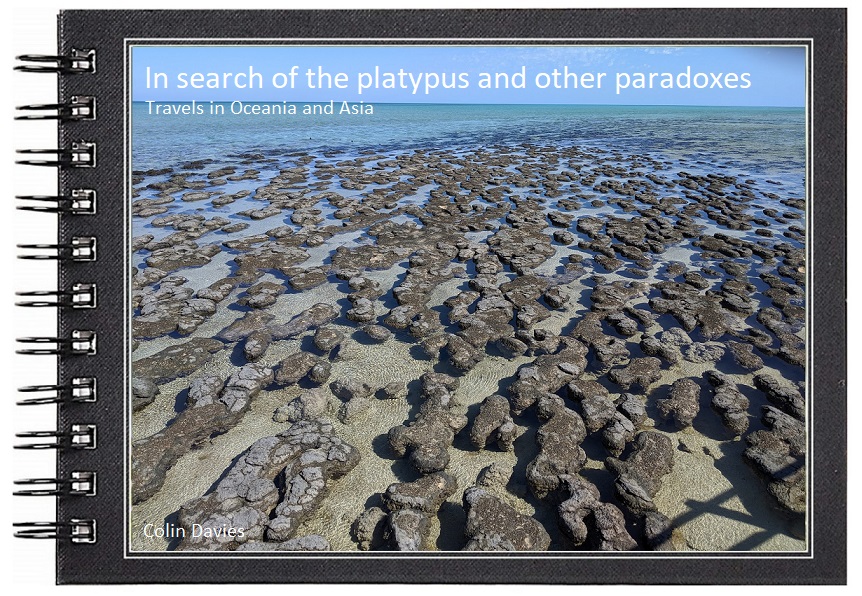This is the full list of birds seen on my trip to Kerala, India in February 2023. The main purpose of the holiday was to visit family in Kochi, but I did manage to fit in a few hours birding here and there, often at the wrong time of day in the sweltering heat of the sun. In the middle of the trip I took off on my own for six days to Thattekad and stayed in a homestay with a birding guide. In total I saw 162 species of birds in India of which 130 were at Thattekad. Great though Thattekad is, there are many excellent birding spots around Kochi which I barely touched on, notably Changaram Wetlands just to the south of the city, which was possibly the best birding site I visited on this trip.
| Species | Locations with number of birds seen in brackets |
|---|---|
| Little grebe | Changaram Wetlands, Kerala (50), Thattekad, Salim Ali Bird Trail, Kerala (1) |
| Spot-billed Pelican | Changaram Wetlands, Kerala (1) |
| Oriental Darter | Changaram Wetlands, Kerala (10), Thattekad, Kerala (3), Thattekad, Birds Song Homestay, Kerala (1), Thattekad, Kalappara, Kerala (2), Thattekad, River Periyar Bridge, Kerala (2), Thattekad, Salim Ali Bird Trail, Kerala (1) |
| Cormorant | Thattekad, Kuttamphza River, Kerala (2), Thattekad, River Periyar Bridge, Kerala (1) |
| Indian Cormorant | Changaram Wetlands, Kerala (5) |
| Little Cormorant | Changaram Wetlands, Kerala (20), Kochi, Fort Kochi, Kerala (5), Thattekad, Kerala (8), Thattekad, Birds Song Homestay, Kerala (1), Thattekad, Kalappara, Kerala (5), Vaduthala, Kerala (1) |
| Striated Heron | Changaram Wetlands, Kerala (1) |
| Indian Pond Heron | Andhakarazhi, Kerala (20), Changaram Wetlands, Kerala (150), Kochi, Fort Kochi, Kerala (50), Munamban Beach, Kerala (20), Thattekad, Birds Song Homestay, Kerala (1), Thattekad, Jungle, Kerala (1), Thattekad, Kalappara, Kerala (4), Thattekad, River Periyar Bridge, Kerala (40), Thattekad, Salim Ali Bird Trail, Kerala (4), Thattekad, Sparrow Vale, Kerala (2), Vaduthala, Kerala (30), Vypin Ferry, Kerala (5) |
| Purple Heron | Changaram Wetlands, Kerala (10), Thattekad, Kerala (1), Thattekad, Birds Song Homestay, Kerala (1), Vaduthala, Kerala (1) |
| Grey Heron | Changaram Wetlands, Kerala (10) |
| Western Reef Egret | Kochi, Fort Kochi, Kerala (1) |
| Eastern Cattle Egret | Changaram Wetlands, Kerala (1), Kochi, Fort Kochi, Kerala (2), Puthuvype Beach, Kerala (5), Thattekad, Kerala (4), Thattekad, Sparrow Vale, Kerala (1) |
| Intermediate Egret | Changaram Wetlands, Kerala (20), Puthuvype Beach, Kerala (5), Thattekad, Kerala (4), Thattekad, Birds Song Homestay, Kerala (2), Thattekad, Sparrow Vale, Kerala (2), Vaduthala, Kerala (10), Vypin Ferry, Kerala (50) |
| Little Egret | Andhakarazhi, Kerala (20), Changaram Wetlands, Kerala (100), Chellanam Harbour, Kerala (50), Munamban Beach, Kerala (20), Vaduthala, Kerala (10) |
| Eastern Great Egret | Chellanam Harbour, Kerala (20), Kochi, Fort Kochi, Kerala (20), Puthuvype Beach, Kerala (5), Thattekad, Kerala (1) |




































